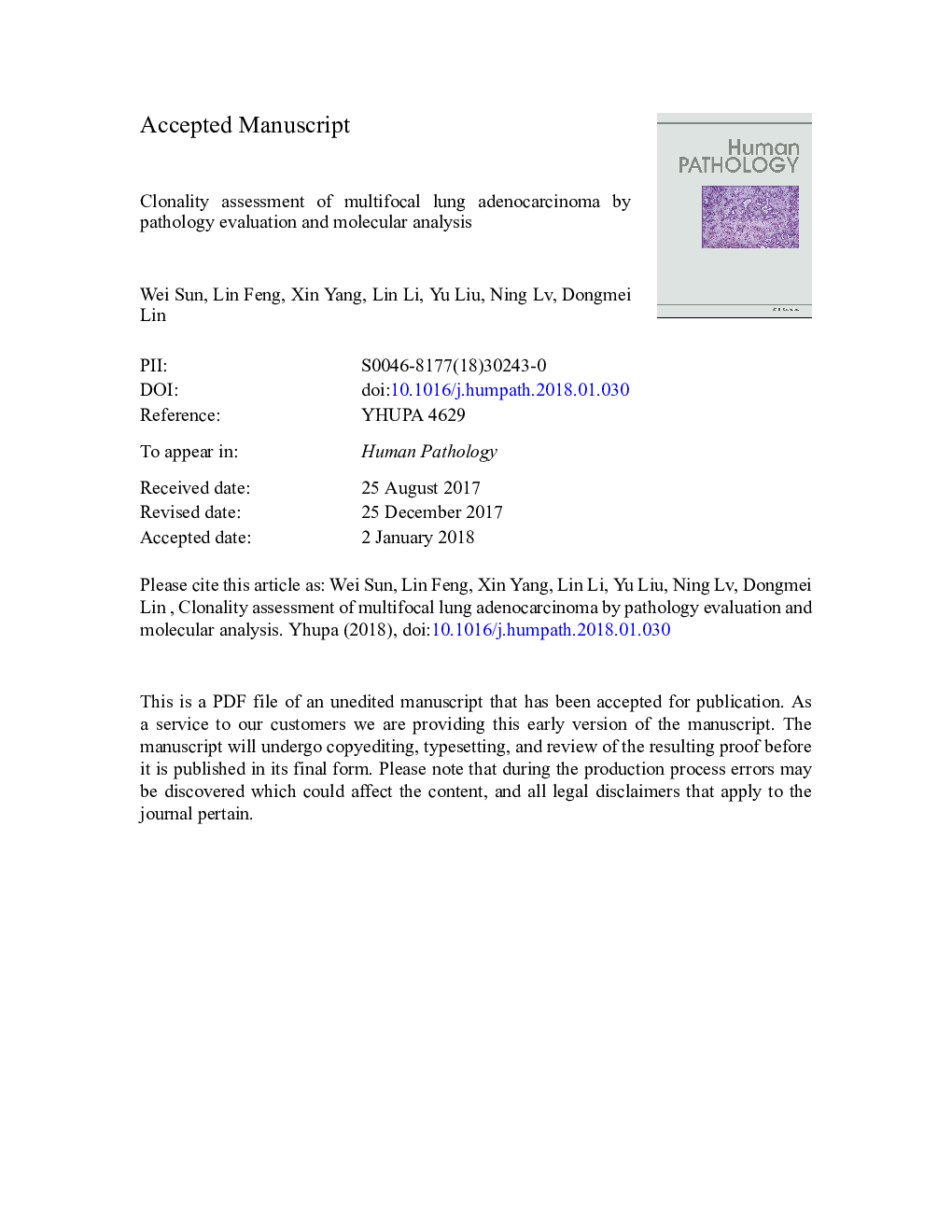| کد مقاله | کد نشریه | سال انتشار | مقاله انگلیسی | نسخه تمام متن |
|---|---|---|---|---|
| 11030548 | 1646278 | 2018 | 37 صفحه PDF | دانلود رایگان |
عنوان انگلیسی مقاله ISI
Clonality assessment of multifocal lung adenocarcinoma by pathology evaluation and molecular analysis
ترجمه فارسی عنوان
ارزیابی کلونال آدنوکارسینوم ریه چند ضلعی با ارزیابی آسیب شناسی و تحلیل مولکولی
دانلود مقاله + سفارش ترجمه
دانلود مقاله ISI انگلیسی
رایگان برای ایرانیان
کلمات کلیدی
تنوع شماره کپی، گیرنده فاکتور رشد اپیدرمال، ضایعه لپیدی آدنوکارسینوم ریه چند نفره، متاستاز ریوی،
موضوعات مرتبط
علوم پزشکی و سلامت
پزشکی و دندانپزشکی
آسیبشناسی و فناوری پزشکی
چکیده انگلیسی
The aim of this study was to explore morphologic and molecular features distinguishing between multifocal lung adenocarcinoma (MLA) and intrapulmonary metastases (IMs). Sixteen patients with MLAs, a total of 34 tumors, were reviewed. Four approaches were used: (1) array-comparative genomic hybridization (CGH) as a standard clonality assessment; (2) EGFR and KRAS mutational profiles as a supplementary method; (3) comprehensive histologic assessment (CHA) was method I in pathology evaluation; and (4) CHA combined with lepidic component analysis was method II. The lepidic component was divided into low grade and high grade according to extent of atypia; tumors with low-grade lepidic component were defined as primary. Eight patients were found to have IMs and 8 to have multiple primaries (MPs) by array-CGH; 7 had MPs and 9 had IMs by method I; 5 had MPs and 11 had IMs by method II. Compared with array-CGH, method I had a lower coincidence rate (65%) than method II (85%). Univariate analysis revealed that patients with MP had a better clinical outcome than those with IM only if the MPs were diagnosed by array-CGH (Pâ¯=â¯.034) or method II (Pâ¯=â¯.027) but not EGFR/KRAS mutation (Pâ¯=â¯.843) or method I (Pâ¯=â¯.493). Our results suggest that a low-grade lepidic component is a sign of a primary tumor. CHA combined with a low-grade lepidic component (method II) is more accurate clinically and more cost-effective in distinguishing MLAs from IMs. Also, EGFR mutation is not an appropriate molecular marker for clonality assessment.
ناشر
Database: Elsevier - ScienceDirect (ساینس دایرکت)
Journal: Human Pathology - Volume 81, November 2018, Pages 261-271
Journal: Human Pathology - Volume 81, November 2018, Pages 261-271
نویسندگان
Wei MD, Lin MD, Xin MD, Lin MD, Yu MD, Ning MD, Dongmei MD,
